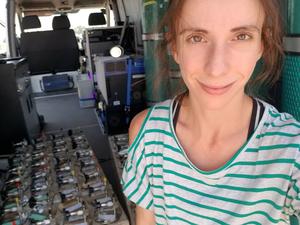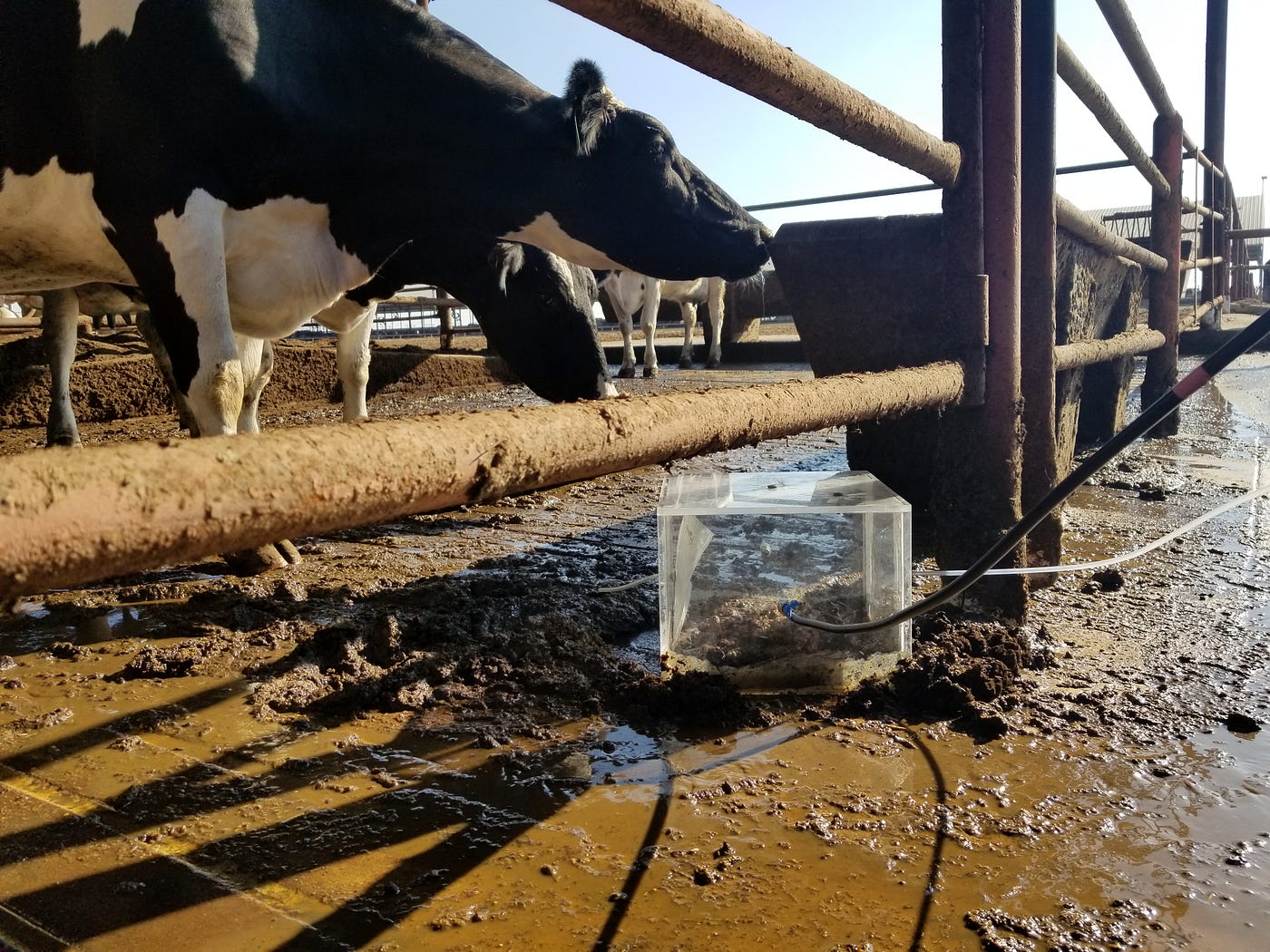Brenna Biggs and the manure machine

Brenna Biggs stands in front of air canisters filled with dairy farm air.
In January, UCI chemistry doctoral student Brenna Biggs visited a dairy farm in Visalia, California where there are lagoons churning with cow manure. Biggs drove around the farm in a white Sprinter van owned by the University of California, Riverside, and the van had nothing in its trunk but empty space and lab equipment. Biggs used two-liter stainless steel canisters to capture samples of the air that hovered around the farm, and she stored the samples in the back of the van, which she calls a mobile lab — or, more recently, the “manure machine.”
The State of California wants to cut its climate change-driving greenhouse gas emissions, and farms like the ones Biggs visited leak greenhouse gases like methane and carbon dioxide into the air. But just how much gas the farms emit is mostly unknown, which is why Biggs visited the farm; she wants to help the state understand the scale of dairy farm emissions, and she wants to see which parts of the farm emit the most gases.
There are four lagoons at the Visalia farm Biggs visited. Manure smells filled the manure machine as she drove to the edge of the lagoons, where she sampled the air from inside the van. “You still smell everything,” says Biggs, who made sure that the wind blew toward her, not away, because she wanted to capture samples of air that also had gases from the lagoon in them. “The typical wind direction is very important for taking samples,” she says.
Biggs measured gases at other places around the farm to see if lagoons are the farms’ biggest gas emitters. In many places, she set a plastic box down on manure piles to measure the gases the piles emit. Cows kept kicking the box over, but Biggs retrieved air samples. She also collected samples of cow breath, because cows emit methane out their mouths when they breathe. Biggs would drive to the cows, open the front door of the manure machine and hold a plastic tube to the cows’ mouths and pump the air into a canister.
Biggs collected hundreds of air samples at the farm, and so far her data suggests lagoons are the biggest gas emitters at dairy farms. She still needs to analyze the data she collected — but if lagoons are indeed the biggest sources of greenhouse gases on dairy farms, then farmers wanting to control their emissions will know which part of their farm to deal with first.

Caption: Cows inspect Brenna Biggs’s air-trapping box. Credit: Brenna Biggs
